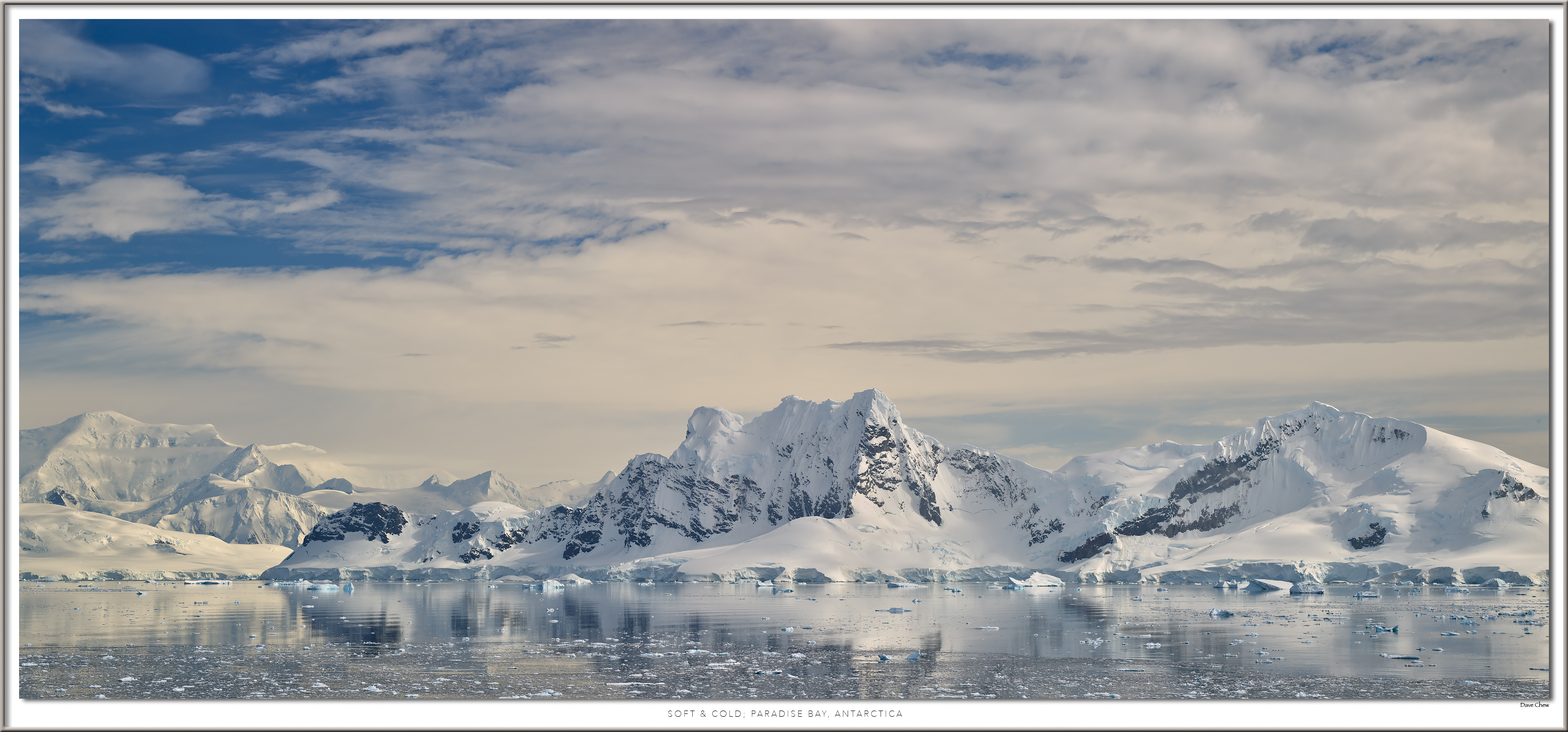MGrayson
Subscriber and Workshop Member
Amazing! What was the shutter speed?I will work on a BTS for this image to explain how I got the crazy idea to shoot a two-image stitch from the ship on a tripod. I never thought this would work, but it did with no apparent issues. From a morning in Paradise Bay, which is on the west coast of the Antarctic Peninsula. It is the right name for this bay.
Rodi 138f, Alpa STC, IQ4 150. Two image stitch shifted 18mm L/R.
Dave

This picture reminds me of the most unlikely event in the history of photography (it was actually a movie). Shackleton and company are stranded on and antarctic island for two years. (I may have all the details wrong). Two of them row 800 miles to another island and get help. The rescue ship finally shows up and the guys on shore FILM THEIR ARRIVAL. They had kept the movie camera working and the film stock ok while surviving antarctic winters. THAT is dedication to your gear!








